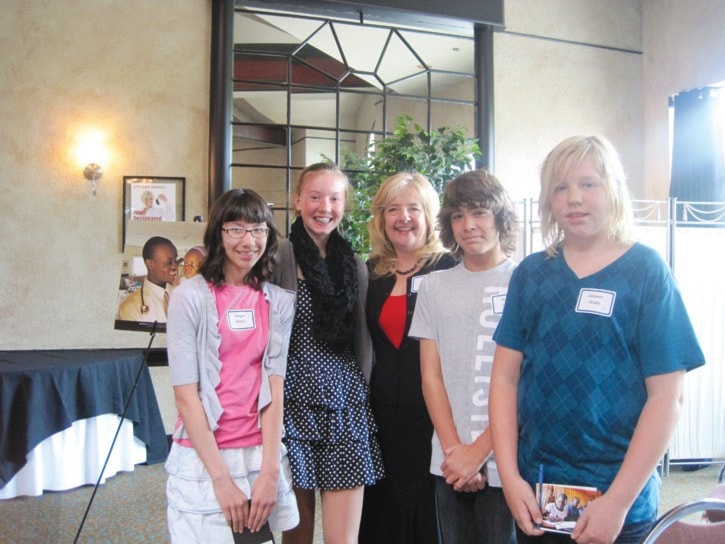Ruth StewartSpecial to Peace Arch News
The African fable of the weaverbird and the grasshopper illustrated sustainability to 90 guests at the recent ACCES luncheon at Surrey’s Eaglequest Coyote Creek.
The moral, explained Dale Albertson, is if you are reliant on the generosity of someone for too long, that charity might eventually disappear.
In the audience of adults and youth were students from three Surrey schools linked to rural Kenyan classrooms: Cedar Hills, Crescent Park Elementary and Semiahmoo Secondary.
Albertson, executive director of the African Canadian Continuing Education Society, returned from Kakamega, Kenya in late April. He reported that the impoverished villagers are working on community projects to break the former grasshopper cycle of depression and dependency. The goal is to have Kenyans themselves sustain their advances to overcome poverty through community education for children and adults.
In 1993, Beth and George Scott, founders of ACCES, contracted with just one village that if they built a school for themselves, ACCES would pay the teachers’ salary. Today, 1,500 students are being educated in nine sponsored schools.
Students have progressed from elementary to secondary levels, often registering high levels of achievement. Another 300 youth receive post-secondary scholarships. Health care, morning food programs, micro-credit agro-business, and income generation projects are now in place.
Weaverbirds like students Sinon and Lauren spoke of how Crescent Park Elementary has raised in excess of $2,000 for their school, Elufafwa.
Students at Elufafwa “would happily walk to their school even if it means a five-kilometre walk in bare feet, on an empty stomach,” Sinon said.
Lauren recognized that children were all the same.
“I also learned that’s it’s easier for some of us than it is for others,” Lauren said.
What signs are there that the Kenyan themselves can sustain this impetus? Three of the straw-roofed, open-walled schools are now built of concrete blocks. Four more are about to be constructed with support from the Canadian International Development Agency.
The government of Kenya will take over the administration of the new schools, releasing funding for more needy ones. All employees in Kenya are Kenyan.
In November 2010, the Scotts met in Nairobi with ACCES scholarship recipients. These young professionals pledged to fund other children in need.
All these are indicators that, at the grass roots level, sustainability is developing in Kakamega.
For more information, visit www.acceskenya.org
